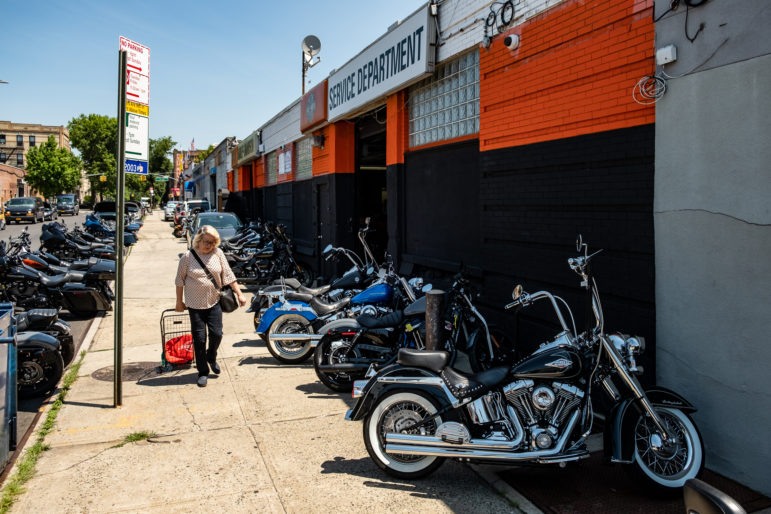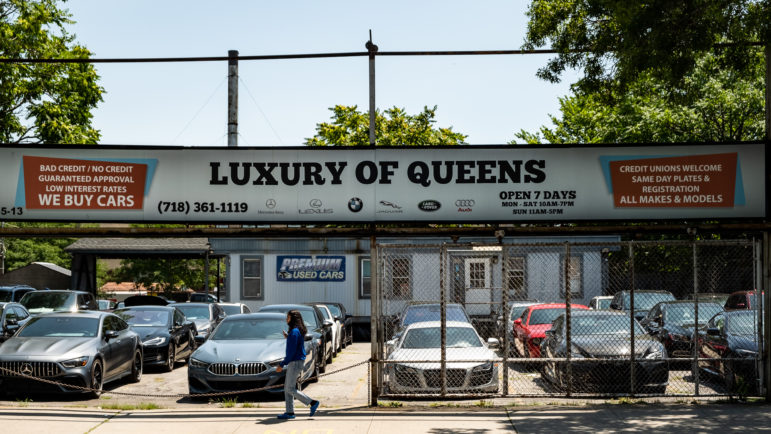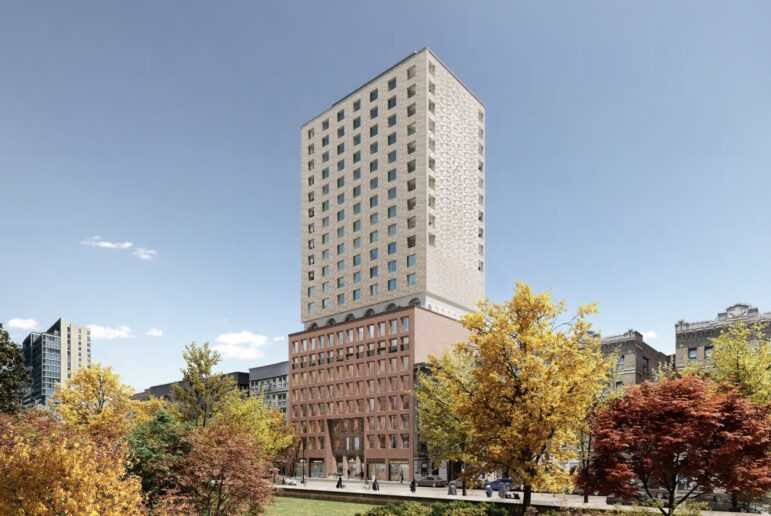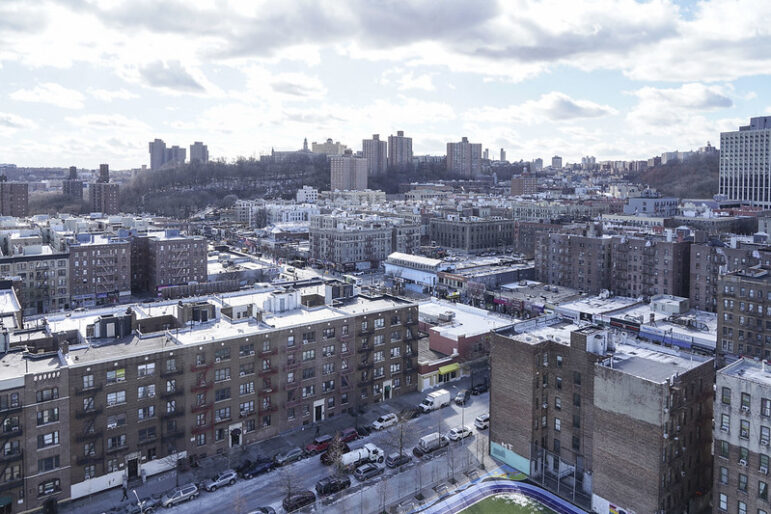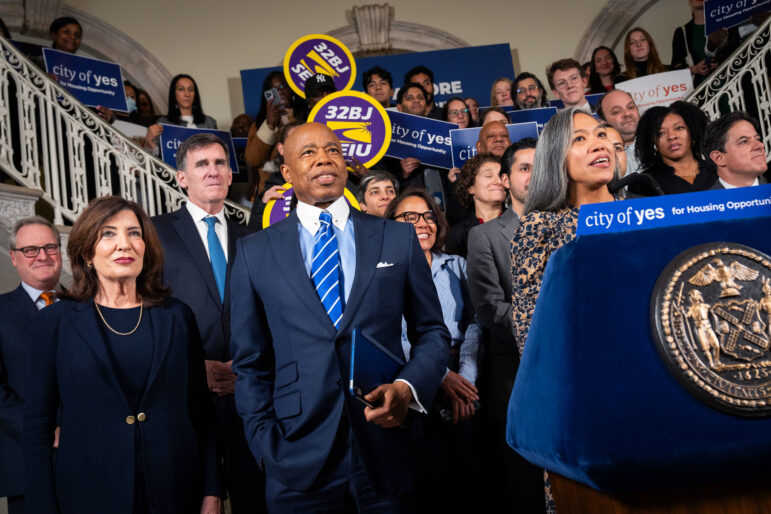Councilmember Julie Won issued a list of “land use principles” she said she will apply to new projects in her district that require Council-approved changes to the city’s zoning code—including a controversial proposal to build a 3,000-unit complex in southern Astoria.
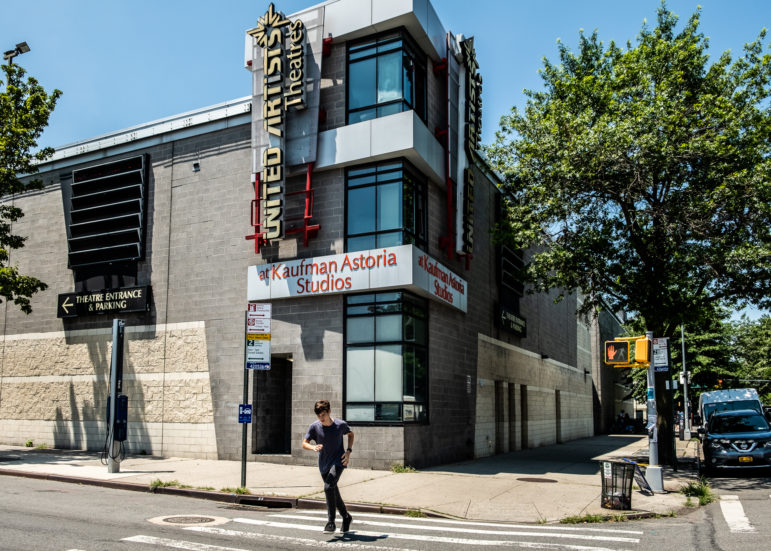
Adi Talwar
Corner of 35th Avenue and 38th Street in QueensDevelopers eyeing an Astoria rezoning now have a rubric to follow as they seek key support from the councilmember who represents the five-block span.
Councilmember Julie Won has issued a list of “land use principles” she said she will apply to any new projects in her district that require Council-approved changes to the city’s zoning code—including a controversial proposal to build a 3,000-unit housing and commercial complex atop what is now a manufacturing district in southern Astoria.
Won’s stance on the plan, known as Innovation QNS, will likely determine its fate since the rest of the City Council almost always defers to the local member on land use issues in their district.
READ MORE: Queens Community Board Rejects 5-Block Rezoning Plan Over Affordability Concerns
Won’s rubric focuses on affordability, community engagement and infrastructure investment, with a specific provision demanding that developers cap rents for more low- and middle-income residents.
“You can’t come into my district and say, ‘Who knows, Julie may work with us,’” Won told City Limits. “If you want to come to our district, you know these are the minimum requirements you have to meet to work with us.”
So far, she said, the real estate team behind the Innovation QNS project—Silverstein Properties, BedRock Real Estate Partners and Kaufman Astoria Studios—have struck out on two of the three principles she outlined.
“They have already failed community engagement and affordability,” Won said. “I don’t know if it’s too late.”
Won previously slammed the plan for what she considered a lack of outreach to local residents, especially immigrants who do not speak English, by the development team, as well as too few low-cost apartments in the five-block project. Won’s zoning principles are translated into the five of the most commonly spoken languages in the district—English, Spanish, Bangla, Tibetan and Nepalese.
To earn her support, she said, the developers will have to revise the plan and present it once again to Queens Community Board 1, which already rejected the project in its advisory role in June.
The current proposal now awaits a recommendation from Queens Borough President Donovan Richards under the city’s land use process. An official in Richards’ office told the Queens Eagle that the developers have pledged to add more income-restricted apartments to the plan, though they did not provide a number.
Slideshow: The current neighborhood where Innovation QNS is proposed
Photos by Adi Talwar
Kaufman Astoria Studios Vice President Tracy Capune said she and the Innovation QNS team will review Won’s land use principles and “work with her and other community stakeholders to ensure Innovation QNS maximizes benefits for Astoria, including affordable homes; family-sustaining jobs; open space; support for small businesses; and expanded services for young people, immigrants, seniors, and low-income families.”
“We are proud of the plan and the important role we believe this $2 billion investment will play in addressing New York’s economic and housing crises,” Capune continued.
Won’s document states that new projects should set more units aside for residents who earn less than $75,000—a group to which more than half of her district’s population belongs—as well those earning less than $35,000, which make up a quarter of the households living around the Innovation QNS site..
Under existing city rezoning rules known as Mandatory Inclusionary Housing (MIH), developers must cap rents in 25 to 30 percent of new units built in rezoned areas so that low- and middle-income renters can afford to live there. One of two MIH options forces developers to reserve 25 percent of new apartments for New Yorkers earning an average of 60 percent of the area median income (AMI), which amounts to about $56,000 for an individual and $72,000 for a family of three. Ten percent of the apartments must be capped for households earning 40 percent of AMI—$37,360 for an individual and just over $48,000 for a family of three.
Won said new projects must include even more deeply affordable units to win her approval, though she did not draw a line in the sand in terms of the number or percentage of income-capped apartments that she needs to see.
A similar rubric issued by Harlem Councilmember Kristin Richardson Jordan, ahead of a Council committee vote on a proposed housing complex along West 145th Street, listed precise affordability thresholds based on the number of low-income residents of the neighborhood. After pledging to cap rents on more units, the developer pulled the rezoning application rather than comply with the final demands.
The lack of precise benchmarks in Won’s document leaves room for flexibility as negotiations for Innovation QNS continue. During the land use review process for most rezoning applications, developers typically make pre-planned concessions in response to public outcry. The councilmember can then spin those concessions into a “win” that came as a result of their tough negotiating.
But Won said she is not interested in that kind of “dog and pony show” and has already described her demands to the developers.
In addition to affordability, her document states that developers must maintain manufacturing space in areas rezoned for residential use, “present a comprehensive plan for green infrastructure to manage and capture stormwater,” help displaced businesses relocate and consult with various community groups before submitting a rezoning application.
Other councilmembers have begun drafting their own criteria for projects that require rezoning approval in their districts. The rubrics could make it easier to determine whether a project will pass muster with local elected officials who wield immense power over local development amid New York City’s housing shortage and affordability crisis.
Less than 1 percent of all apartments priced below $1,500 per month are empty and available for rent, according to the city’s most recent housing and vacancy survey. The overall vacancy rate in available apartments is 4.5 percent—which does not include tens of thousands of units taken off the market by landlords. The median asking rent reached $2,750 during the survey period, which means that tenants must earn at least $110,000 a year to pay less than 30 percent of their earnings on rent, the threshold at which a household is considered “rent-burdened.”
The shortage has resulted in an entrenched homelessness crisis, forced people to share apartments and driven others into dangerous, potentially lethal, accomodations. Three people drowned in a basement apartment in Woodside, located in Won’s district, during flooding from Hurricane Ida last year. Won said she had them in mind when drafting her development rubric.
“I want to make sure by the end of my tenure I will have spent my time building 50 percent of housing that is truly affordable,” she said. “Until we can reform the land use process, there should be a clear standard for how you can move forward.”



